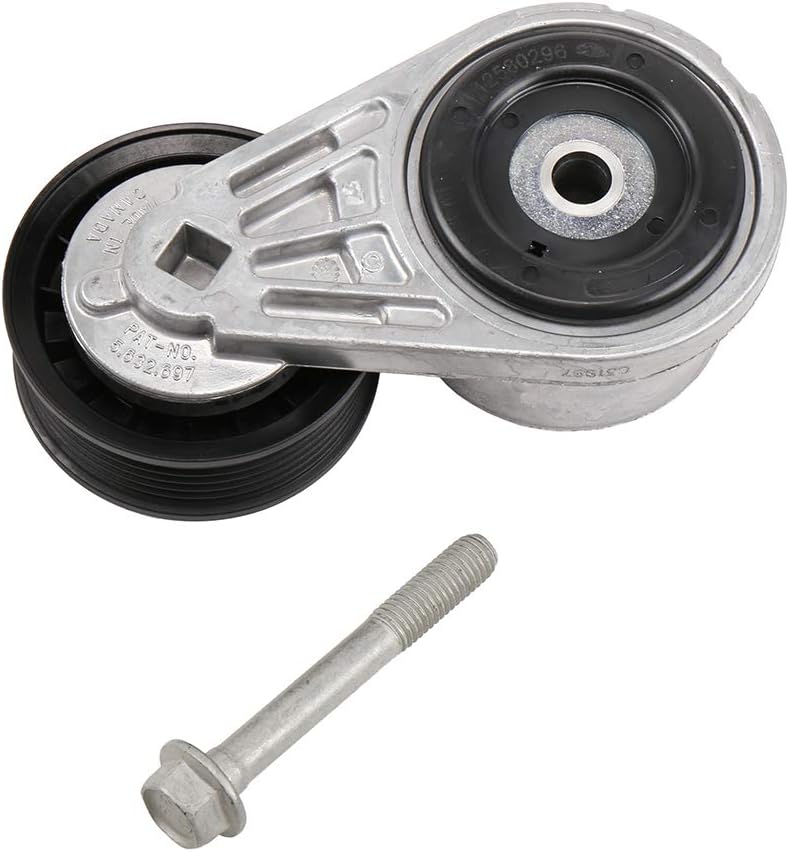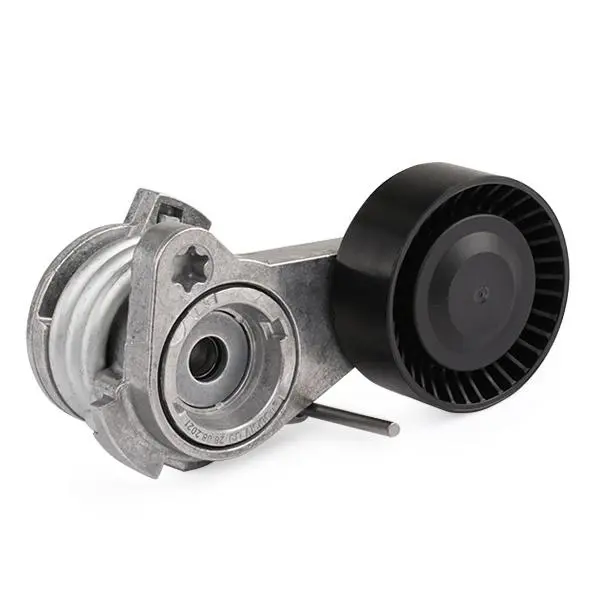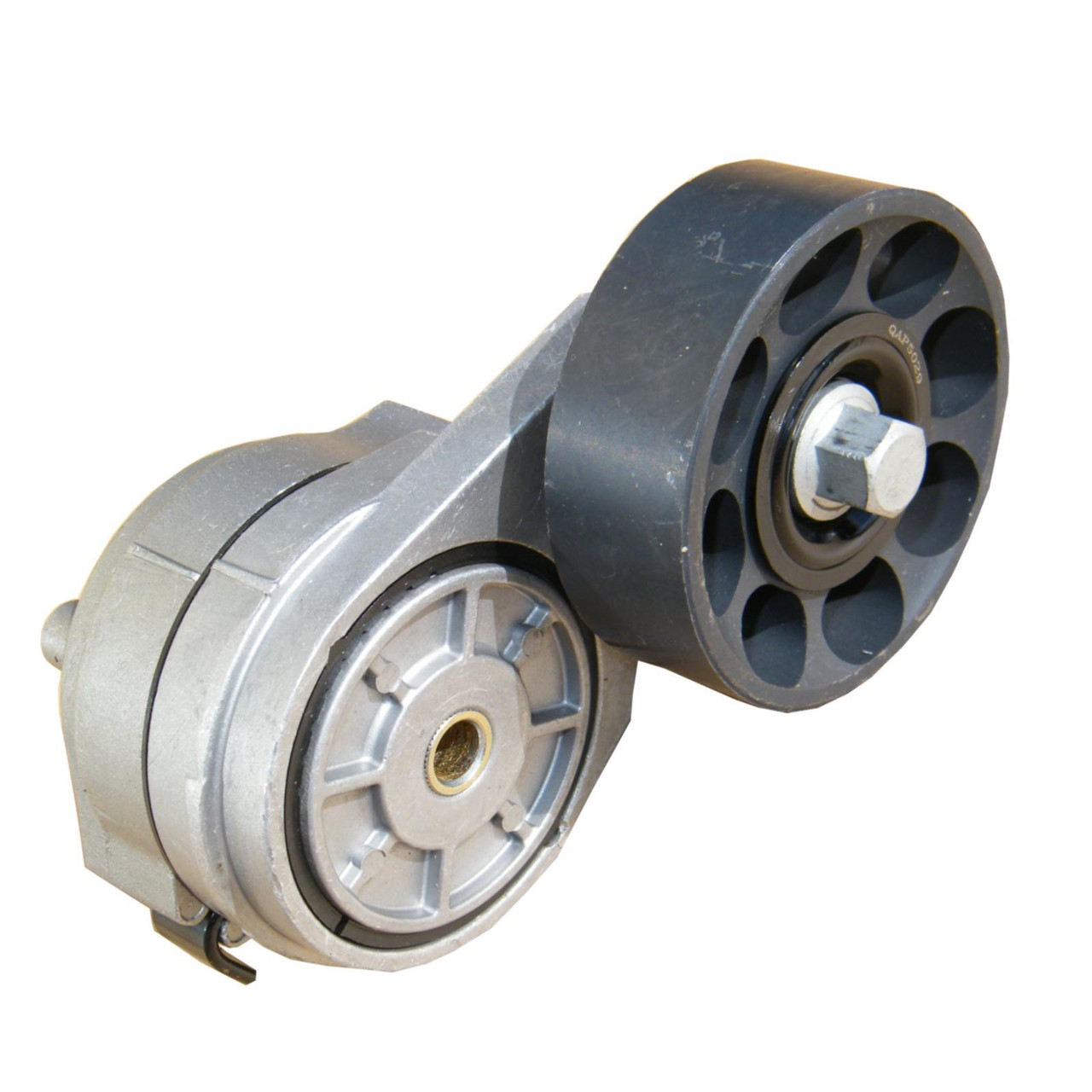
Can you provide guidance on selecting and sizing drive belt tensioners for specific applications?
When selecting and sizing drive belt tensioners for specific applications, several factors need to be considered to ensure optimal performance and reliability. Here’s a detailed guidance on selecting and sizing drive belt tensioners:
- Identify the Application Requirements:
- Consult Manufacturer Specifications:
- Consider Tensioner Design and Mounting:
- Calculate Tension and Load Requirements:
- Consider Additional Features and Maintenance:
- Consult with Experts:
Start by identifying the specific requirements of the application. Consider factors such as the type of system being driven by the belt (e.g., alternator, water pump, power steering), the power transmission requirements, the belt width and length, and the operating conditions (e.g., temperature, environment). Understanding these requirements will help determine the appropriate tensioner design, load capacity, and additional features needed for the application.
Refer to the manufacturer’s specifications and guidelines for the tensioner. Manufacturers typically provide detailed information about the tensioner’s load capacity, belt compatibility, and other relevant technical details. It’s important to ensure that the selected tensioner is compatible with the specific belt type, size, and pulley configuration of the application. Manufacturers may also offer application-specific recommendations or provide technical support to assist with the selection process.
Evaluate the tensioner design and mounting options based on the application’s space constraints, belt path, and alignment requirements. Tensioners are available in various designs such as spring-loaded tensioners, hydraulic tensioners, or automatic tensioners. Consider the advantages and limitations of each design and choose the one that best suits the application’s needs. Additionally, assess the mounting options and ensure that the tensioner can be easily installed and aligned within the system.
Calculate the required tension and load for the drive belt system. The tension should be within the belt manufacturer’s recommended range to prevent slippage or excessive wear. Consider the power requirements of the driven components and the expected operating conditions. If necessary, consult engineering references or software tools that provide tension calculations based on the belt type, pulley size, and power transmission requirements. Ensure that the selected tensioner can handle the calculated tension and load without compromising its performance.
Evaluate any additional features or maintenance requirements that may be beneficial for the application. Some tensioners offer adjustable arms or pulleys, which allow fine-tuning of the belt tension. Others may have built-in dampers to reduce vibrations or diagnostic capabilities for monitoring belt condition. Consider these features based on the application’s specific needs and their potential to enhance performance, reliability, and ease of maintenance.
If you’re unsure about the selection and sizing process, consider consulting with experts or engineers experienced in belt-driven systems. They can provide valuable insights, recommend suitable tensioner options, and ensure that the selected tensioner meets the application’s requirements. Additionally, they can assist with belt tension calculations, system design considerations, and troubleshooting potential issues.
In summary, selecting and sizing drive belt tensioners for specific applications requires a systematic approach. By identifying the application requirements, consulting manufacturer specifications, considering tensioner design and mounting, calculating tension and load requirements, and evaluating additional features and maintenance needs, you can make an informed decision. Consulting with experts can also provide valuable assistance throughout the selection process. Properly selected and sized tensioners will contribute to the overall efficiency, reliability, and longevity of the belt-driven system.

Can drive belt tensioners be customized or modified to suit specific automotive or industrial needs?
Drive belt tensioners can be customized or modified to suit specific automotive or industrial needs. Manufacturers of tensioners offer various options and configurations to accommodate different applications and requirements. Here’s a detailed explanation of how drive belt tensioners can be customized or modified:
- Tensioner Design:
- Tensioner Size and Mounting:
- Tensioner Load Capacity:
- Additional Features:
Drive belt tensioners come in different designs to meet specific needs. Manufacturers offer a range of tensioner designs, such as spring-loaded tensioners, hydraulic tensioners, and automatic tensioners. These designs can be customized based on the specific requirements of the automotive or industrial application. For example, some applications may require tensioners with higher load-bearing capacity or increased resistance to environmental factors like dust, moisture, or extreme temperatures. Manufacturers can modify the tensioner design to incorporate features that enhance durability, performance, and reliability in these challenging conditions.
Drive belt tensioners are available in various sizes to accommodate different belt widths and pulley configurations. Manufacturers provide tensioners in different dimensions, allowing customization based on the specific dimensions of the belt and pulley system. Additionally, tensioners can be modified to suit different mounting requirements. Some applications may require tensioners with specific mounting brackets or orientations to fit within the available space or align with other components. Manufacturers can customize the tensioner’s size, shape, and mounting features to ensure compatibility and ease of installation in the target application.
The load capacity of a drive belt tensioner is an essential consideration for certain applications. Industrial or heavy-duty automotive applications may require tensioners with higher load capacity to withstand increased belt tensions or accommodate larger belt-driven systems. Manufacturers can customize tensioners to meet these requirements by using stronger materials, incorporating reinforced components, or optimizing the tensioner’s internal structure to handle higher loads. By customizing the tensioner’s load capacity, it can reliably handle the specific demands of the application and ensure long-term performance.
Drive belt tensioners can be customized with additional features to enhance their functionality or address specific needs. For example, manufacturers may offer tensioners with built-in dampers to reduce vibrations or noise in certain applications. Some tensioners may have adjustable arms or pulleys to provide fine-tuning of the belt tension. Manufacturers can also customize tensioners to incorporate special coatings or materials that improve resistance to corrosion, abrasion, or other environmental factors. These additional features can be tailored to suit the specific automotive or industrial needs, providing enhanced performance and longevity.
In summary, drive belt tensioners can be customized or modified to suit specific automotive or industrial needs. Manufacturers offer various options for tensioner design, size, mounting, load capacity, and additional features. By customizing tensioners, they can be optimized to meet the requirements of different applications, ensuring compatibility, reliability, and enhanced performance. When selecting or modifying drive belt tensioners, it is essential to consider the specific needs of the application and consult with manufacturers or experts to determine the most suitable customization options.

Can you describe the various types of drive belt tensioners, such as automatic or spring-loaded tensioners?
There are various types of drive belt tensioners, each with its own design and functionality. These tensioners are designed to maintain proper tension in drive belt systems, ensuring optimal performance and preventing belt slippage. Here’s a detailed description of some common types of drive belt tensioners:
- Spring-Loaded Tensioners:
- Hydraulic Tensioners:
- Automatic Tensioners:
- Manual Tensioners:
Spring-loaded tensioners are widely used in drive belt systems. They consist of a tensioner pulley, an arm or bracket, a spring, and a pivot point. The tensioner pulley applies tension to the belt, while the arm or bracket holds the pulley in place. The spring provides the necessary force for tensioning the belt, and the pivot point allows for movement and adjustment. As the belt wears or stretches, the spring maintains constant tension by automatically adjusting the position of the tensioner pulley. Spring-loaded tensioners are commonly found in automotive serpentine belt systems and industrial belt drive systems.
Hydraulic tensioners utilize hydraulic pressure to maintain proper belt tension. They consist of a tensioner pulley, an arm or bracket, a hydraulic cylinder, and a pivot point. The hydraulic cylinder is filled with hydraulic fluid and equipped with a piston. As the belt stretches or wears, the hydraulic pressure in the cylinder adjusts, causing the piston to move and maintain the tension. Hydraulic tensioners provide precise and continuous tension control, making them suitable for applications with varying load conditions. They are commonly used in automotive timing belt systems and other industrial belt drive systems.
Automatic tensioners are designed to provide continuous and automatic adjustment of belt tension. They incorporate various mechanisms to monitor belt conditions and load variations, ensuring optimal tension at all times. Automatic tensioners can be spring-loaded or hydraulic, depending on the specific design. These tensioners eliminate the need for manual adjustment and provide self-regulating tension control. They are commonly found in automotive serpentine belt systems, where they continuously adjust the tension to compensate for belt wear, stretch, and varying accessory loads.
Manual tensioners require periodic manual adjustment to maintain proper belt tension. They are typically simple in design and involve an adjustable bracket or arm. The tension can be adjusted by moving the position of the tensioner pulley manually. Manual tensioners are often used in smaller machinery or equipment where frequent adjustment is feasible and load conditions are relatively stable. They provide a cost-effective solution for maintaining tension in belt drive systems with lower load requirements.
In summary, there are several types of drive belt tensioners, including spring-loaded tensioners, hydraulic tensioners, automatic tensioners, and manual tensioners. Each type has its own design and functionality, providing different levels of tension control and adjustment. Spring-loaded tensioners and hydraulic tensioners use mechanical or hydraulic force to maintain tension, while automatic tensioners continuously monitor and adjust tension automatically. Manual tensioners require manual adjustment at regular intervals. The choice of tensioner type depends on factors such as the specific application, load conditions, and desired level of tension control.


editor by CX 2024-04-23